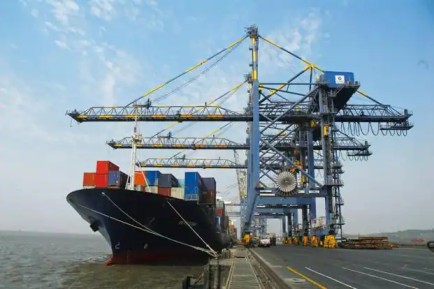India–US Trade Tensions Rise Over Steel and Auto Tariffs NMDC Limited reports a 38% drop in Q4 FY24 consolidated net profit RINL to Raise $23 Million Through Land Sales Amid Crisis

According to a senior government official, the shipping ministry intends to switch to an 80% landlord model by the end of this decade in order to boost productivity and lower logistics expenses at major ports. Under the landlord model, the port authority serves as both a landlord and a regulator, with private companies handling the operational responsibilities.
Speaking at CII Annual Business Summit 2024, Ports, Shipping and Waterways Secretary TK Ramachandran said Jawaharlal Nehru Port (JNPT) has become the first major port of the country to become 100% landlord port, having all berths being operated on PPP model. The PPP (public-private partnership) model is considered an effective tool for attracting investment in the port sector. "We have 12 major ports, and we have a huge capacity.
We want to shift to an 80% landlord model by the end of this decade," Ramachandran said. He further said the four pillars that the Shipping ministry is working on to improve the cost and ease of doing business are developing port- based industrial clusters, investments in the maritime sector, ensuring PPPs and multi-modality. Ramachandran said that 10 years ago, India had five national waterways. Now, the country has 111 waterways.
"We have reformed the Major Ports Act, the Inland Vessels Act. We have made changes in the model concession agreements (MCAs) to make them more private sector friendly, banking friendly and investment friendly, he added.
Also Read : Reduction of logistics cost is a big macro turnaround for India Railways eye faster cargo movement with 200 new Gati Shakti Terminals, worth ₹14,000 cr